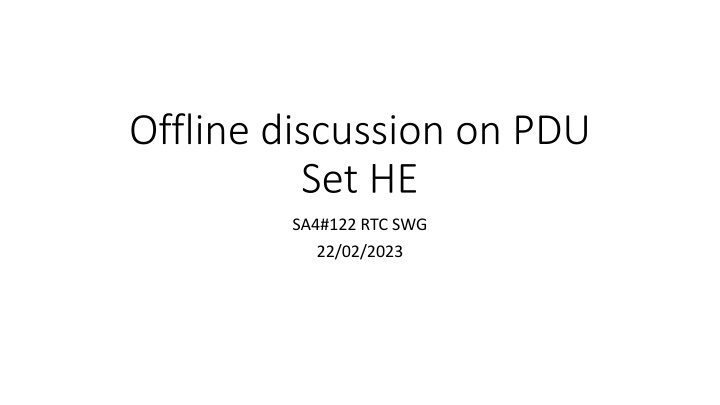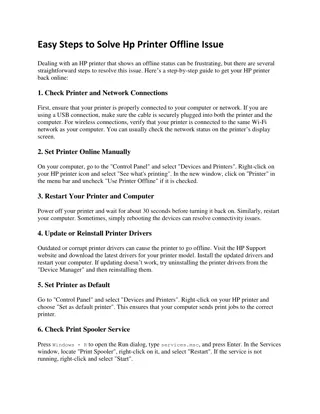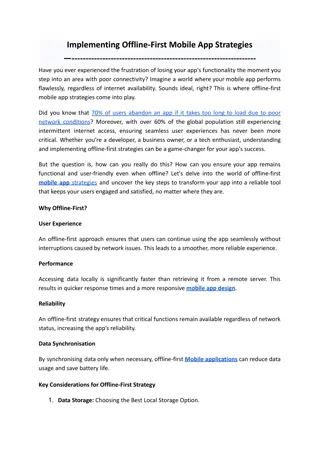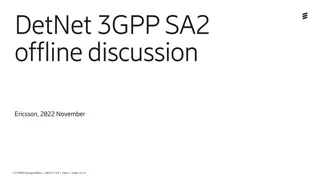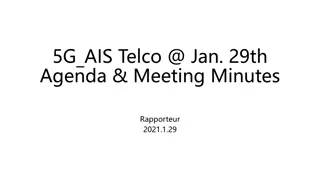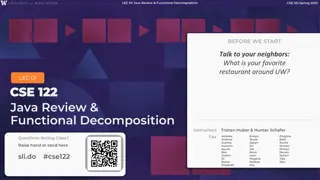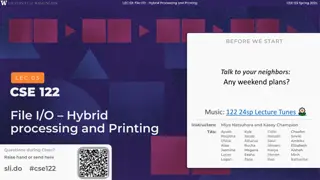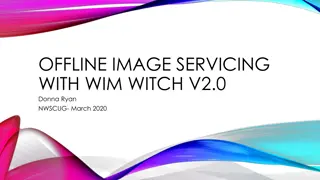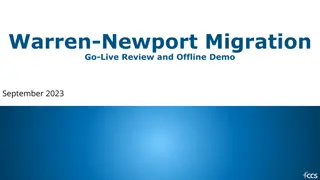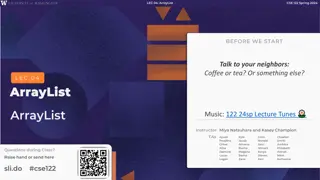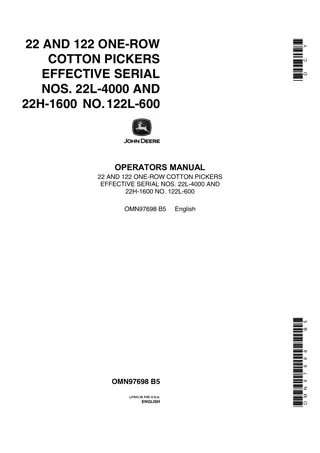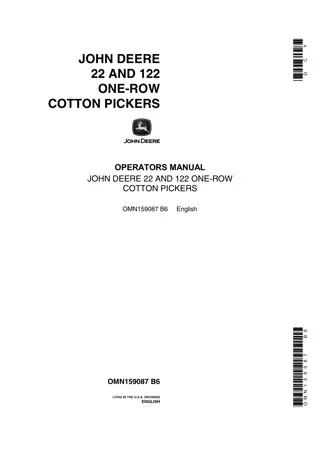Offline Discussion on PDU Set HE SA4#122
Agenda includes deciding on actions needed in SA4, defining a minimal HE with future extensibility, and careful evaluation of problems and solutions. Participants from various tech companies are involved. Relevant tdocs summary and meeting minutes are discussed.
Download Presentation

Please find below an Image/Link to download the presentation.
The content on the website is provided AS IS for your information and personal use only. It may not be sold, licensed, or shared on other websites without obtaining consent from the author.If you encounter any issues during the download, it is possible that the publisher has removed the file from their server.
You are allowed to download the files provided on this website for personal or commercial use, subject to the condition that they are used lawfully. All files are the property of their respective owners.
The content on the website is provided AS IS for your information and personal use only. It may not be sold, licensed, or shared on other websites without obtaining consent from the author.
E N D
Presentation Transcript
Offline discussion on PDU Set HE SA4#122 RTC SWG 22/02/2023
Agenda Decide on what needs to be done in SA4, where and by when? Definition of minimal HE with possible future extensibility to meet SA2 deadlines while still evaluating the solution further in SA4 Carefully evaluating first the problem and then the solution instead of rushing to meet SA2 deadlines before agreeing on a format. Write an LS to SA2
List of participants Saba Ahsan (Nokia) Serhan G l (Nokia) Spencer (Tencent) Shuai (Intel) Imed Bouazizi (QC) Hyun-Koo (Samsung) Andrei (Lenovo) Srinivas (Interdigital) Qi Pan ( Huawei) Liangping (QC) Thorsten (Ericsson) Bo (Ericsson)
Relevant tdocs summary 129 (Intel) uses frame marking 139 (QC) defines a new HE using SA2 work as basis 148 (Samsung) defines several HEs, each carrying a specific field based on the SA2 work 204 (Nokia) defines a new HE using SA2 work as basis
Minutes (1) The SA2 work currently does not consider multiplexed RTP streams (multiple media streams using a single UDP port). Such streams may be more commonly used in WebRTC. The RTP HE local identifier is not a fixed value and is negotiated during the SDP. It is not clear how this information can be communicated to the UPF. We can set up the ID once during session setup and signal it to the MSH with the condition that the AS can not renegotiate the IDs during the session. Renegotiation may be allowed if it does not create latency issues for the media. We can consider a check pattern at the beginning of the HE so the UPF can find it. However, this would create waste since it needs to be sent every packet. We generally agree on sending PDU set sequence number, PDU sequence number, End PDU indication, importance and optionally PDU set size as part of the RTP HE. The importance field can create a security risk if it s transported without encryption. The semantics of the importance field needs to be further defined based on the 3GPP codecs (existing and new ones that are included as part of Release 18 work in SA4). We will send an LS to SA2 to indicate that we are discussing and finalizing a single solution in SA4 for the PDU set information handling. Another offline session will be held for formulating the LS. Can we have in the same QoS flow some PDUs marked with PDU set information while others unmarked. We need to check this with SA2. Tdoc from electronic meeting in January S2-2300962 needs to be checked. SA4 should investigate whether the key issue #4 and 5 in SA2 XRM study are enough or further work is needed for PDU set information.
Minutes (2) Spatial scalability is not supported in 3GPP codecs, so should not be considered at this point. Frame marking draft can be used as a reference for the codecs supported in 3GPP. However, we should not use the framemarking HE. Codecs can be checked from TS 26.511. We should consider that we use SRTP and payload is not always visible. We should try to keep the header compact. Number of bits for PDU set sequence number: Depends on level of reordering. There can be upto 1000 slices in HEVC, theoretically, do we need more than 4 bits? We should check XR Traffic and also consider theoretical limits. Number of bits for PDU sequence number: We should check XR traffic and also consider theoretical limits. PDU set size: Option 1: Fixed field set to 0 if not known. (advantage: the HE fields are always the same, disadvantage: waste) Option 2: It is only used when available and is added as an extension parameter in the SDP. If used, it should always be present in the RTP HE. Is there a benefit of adding a PDU set size in the middle of transmitting the PDU set? Extensibility of the HE Option 1: Create a fixed header with fixed fields and use version number in URN (SDP). Option 2: Create a fixed header One-byte or Two-byte header: All HEs that are being used need to be either one-byte or two-byte so both should be supported. Importance: We need to discuss further how to define guidelines for the AS to fill the importance field. The UPF may not need to understand how the application set the field.
